#5: July 1963, in Paris (part 2)
The Louvre, Notre Dame, Seine boat ride, Bastille Day, and more.
Saturday
Another big day. We went first to the Louvre so Bertha could see the three attractions—Mona Lisa, Venus de Milo, Winged Victory. Then to the print shop—off in one corner where they sell prints taken from 18th century copper plates. We had quite a time with no French, but we bought some.
La Chalcographie du Louvre produces reproductions of over 14,000 prints from the Louvre’s collection. They have an archive of copper plates; master printers at the Louvre print them for sale on museum-quality paper. Images include detailed maps of Paris; engravings of Napoleon’s campaign in Egypt; hundreds of prints from the galleries and gardens of Versailles; splendid botanical prints; examples of period costumes in sumptuous color; scenic landscapes; and selected modern and contemporary artists. The most popular images are already in stock, and the rest are housed in leather books to explore.
Then to Les Halles, the market. We taxied to two places—one was out of business, the other closed. Finally ended at L’Escargot, one of the oldest in Paris. The food was excellent—expensive but worth it for one meal. We had the speciality of the house, Chateaubriand Bordelaise (steak with a sauce).
L’Escargot Montorgueil opened in 1832 and is still in business today. And here’s a recipe for classic Chateaubriand with Bordelaise Sauce.
Then we went to a housewares store. Such a stock, and such confusion. Then to a store where Liz bought truffles to send her daughter.
After stopping to leave our packages at the hotel we went to Notre Dame—then Saint Chapelle. It is quite near Notre Dame, and is a jewel. This is the 800th anniversary year. It is small in comparison with a cathedral. Stained glass windows all around.
The Cathedral of Notre Dame has recently been restored and reopened after a catastrophic fire in 2019. Here’s a feature on the restoration with views of the interior.
Sainte-Chapelle is a chapel in the Gothic style, located on the Île de la Cité in Paris. Consecrated in 1248, it is now a museum. Among many other architectural and historical treasures, it has an extensive 13th-century stained glass collection.
We had our first rain as we left there. Finally found a taxi, and as it had cleared we took our boat ride on the Seine. There were very few people on the boat. I did enjoy it.
Here’s a 1963 map from the Bateaux-Mouches company, which offered boat trips along the Seine. Founded in 1949 with a single steam boat, their fleet now numbers 15 boats and they continue to be a very popular attraction in the city.
Then to the Arch of Triumph. We walked around it, then all the way to Place de Concorde—then to the hotel. It felt long to my feet, and it even looked long on the map.
According to Google Maps, this would have been a 4.7 km (about 3 mile) walk. Tired feet!
I have seen so much more of Paris this time. One entrance of the Louvre has pink marble pillars. Many, many of the buildings are in the process of being cleaned, and it surely adds to their beauty.
The Arc de Triomphe du Carrousel is a second triumphal arch built by Napoleon, a little brother to the famous Arc de Triomphe de l'Étoile and located between the Louvre and the Tuileries garden.
I found, and mailed, the postal card I thought I had lost. I had put it away too well.
And now to bed. All this walking makes for good sleeping—but don’t think I’ve walked off any pounds.
Sun. a.m.
I have had two packages mailed to you—perfume, gloves—though not all for you. You may open or not as you see fit.
Think today I’ll wash my hair—it is as free a day as I can see for some time to come. I have been amazed how well your “set” has stayed. Hope mine is as good.
Heard the music of the Bastille Day Parade. Last night we saw the grandstand, as well as many other places for seats—and the streets blocked off. Helen went with Bertha to church. They saw the great crowds, and a cavalry unit for the parade. I’m waiting for my hair to dry. It takes quite a while without a dryer.
One of the oldest regular military parades in the world, the Bastille Day Military Parade has, almost without exception, been held on July 14 since 1880. The 1963 parade featured three of Frances’s newest tanks.
The girls have gone down to lunch. I had mine sent up as my hair is not quite dry. I had an omelette—good—and bread, which is good every place we have eaten. We may have to eat in the hotel dining room tonight. Many places are closed on Sunday, plus the fact that this is Bastille Day.
The French Chef, Julia Child’s wildly popular cooking show, premiered as a weekly series in 1963. This episode from Season 1 shows her making a French omelette.
My hair looks good—tho’ not quite as good as when you did it.
Helen and I gook a cab over to the Left Bank—she wanted to see Delacroix’s studio. It was closed but there was a nice little square. Then we walked for about forty-five minutes and took a cab back to the hotel. It is amazing how cheap the cabs are in comparison with the other prices—especially when all four go. It figures out less than bus fare in Cleveland.
Eugène Delacroix is widely regarded as the leader of the French Romantic school of painting. He was a prolific and passionate artist. One of his most influential works, Liberty Leading the People, is exhibited in the Louvre. The studio where he lived and worked in the last several years of his life has been preserved and is now a national museum. The square Katharine references—the charming Place de Furstemburg—is nearby.
Mon. a.m.
At breakfast. We ate at Angelina’s—which is the Paris place of Rumplemeiers(?) of New York. We walked in the Tuileries Gardens.
Confectioner Anton Rumpelmayer founded a number of cafes, including Rumpelmayer’s (now closed) at the St. Moritz hotel in New York, and Angelina in Paris. The Tuileries Garden, between the Louvre and the Place de la Concorde, was created by Catherine de' Medici as the garden of the Tuileries Palace in 1564. it was opened to the public in 1667 and became a public park after the French Revolution.
At nine we went for a ride of the “illuminations.” The most interesting part was the fireworks over the Seine. I had seen them two years ago—we all remarked about the good behavior of the crowd—how quiet it was. Then we drove on the Left Bank—the crowd there was different for sure.
The Rive Gauche (Left Bank) of the Seine was for a long time the center of bohemian, avant-garde chic and intellectual culture in Paris, while the Right Bank was the center of culture, with museums, galleries, and restaurants.
Enough—must eat—this is a long edition.
Love,
K




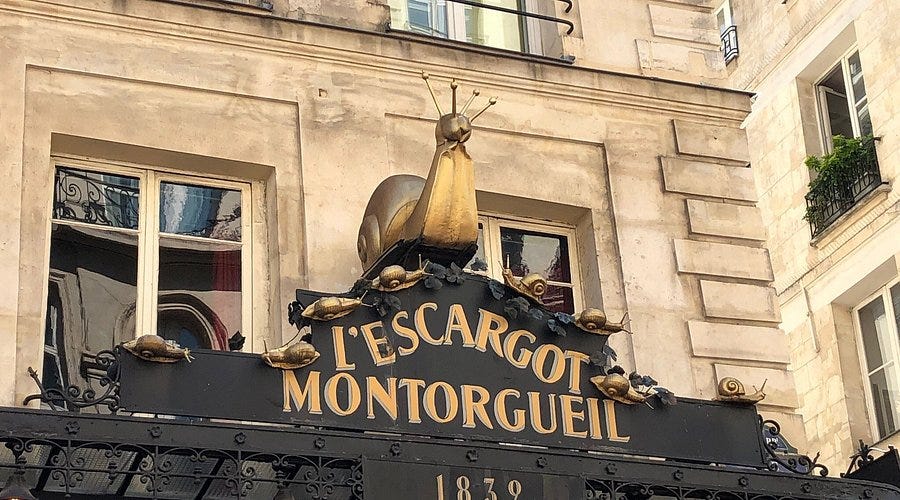
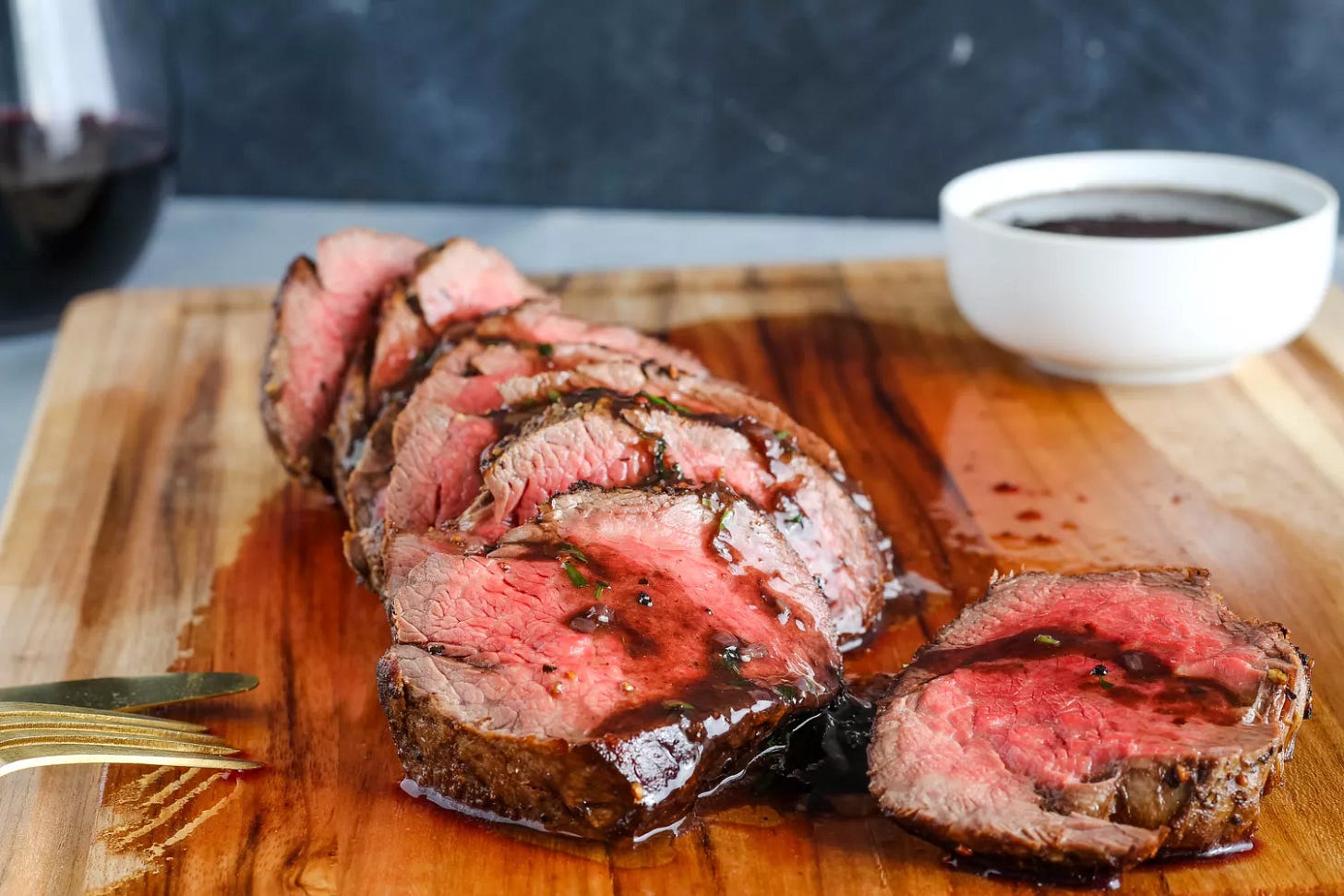
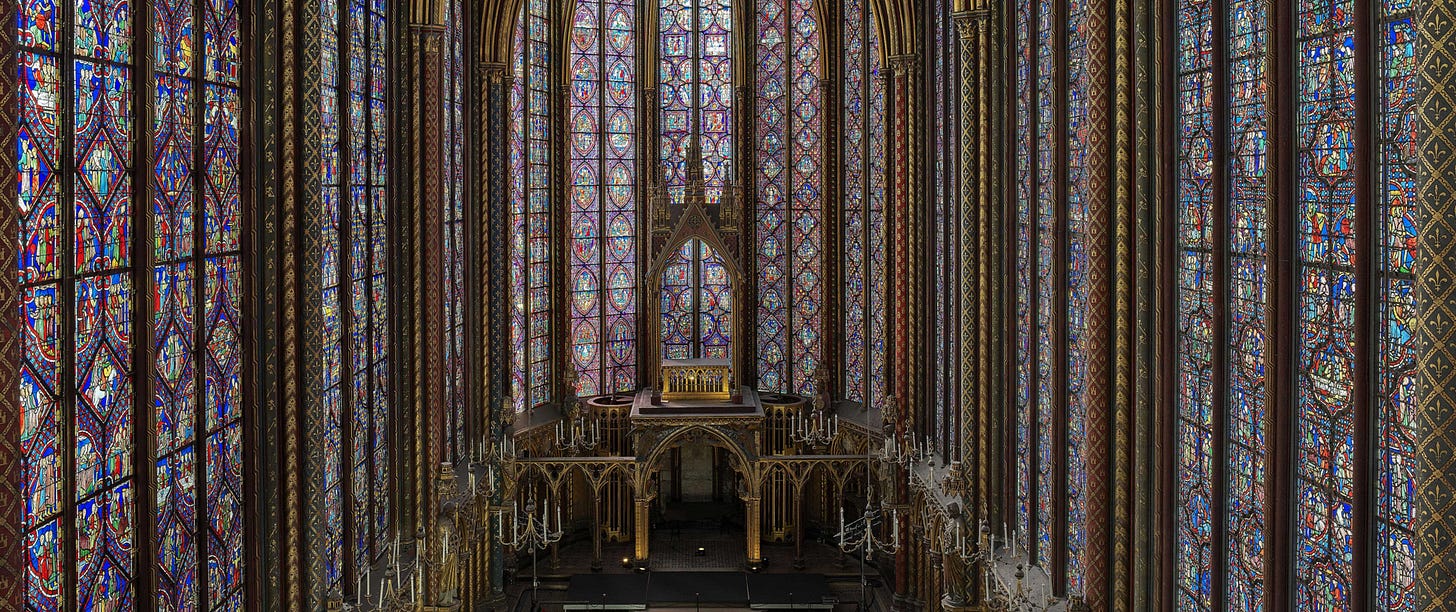
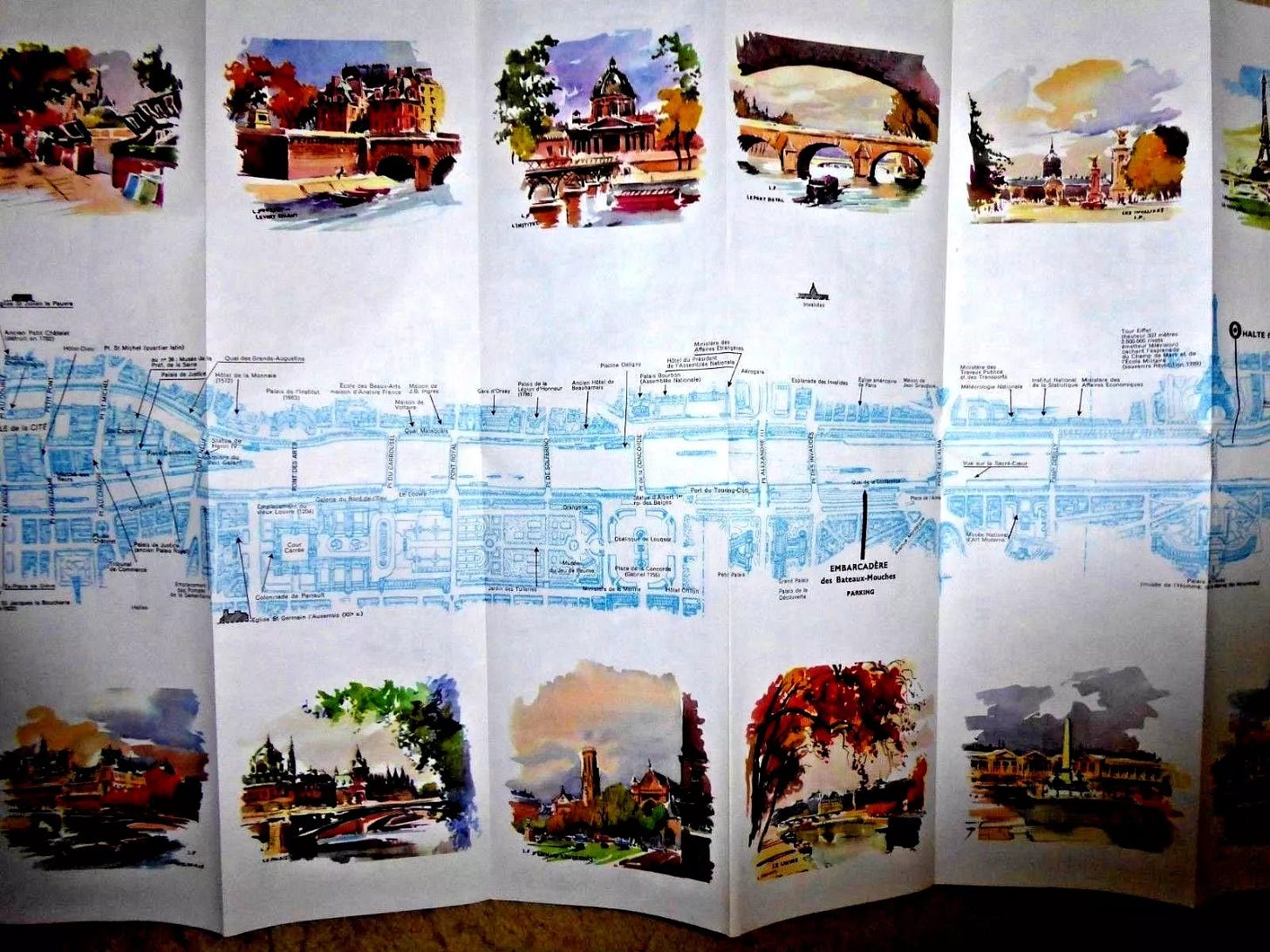

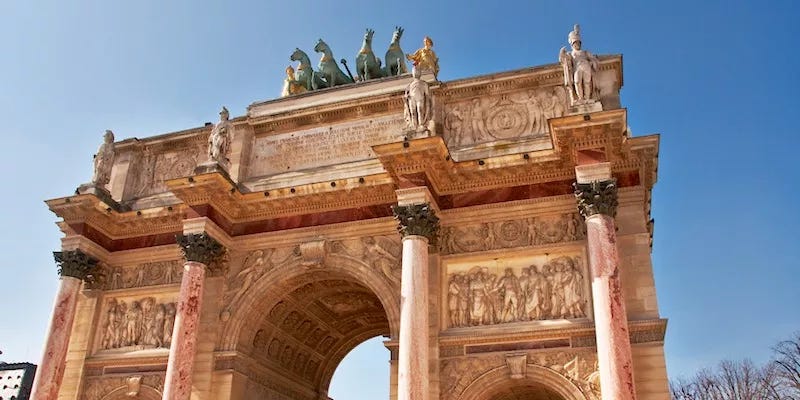
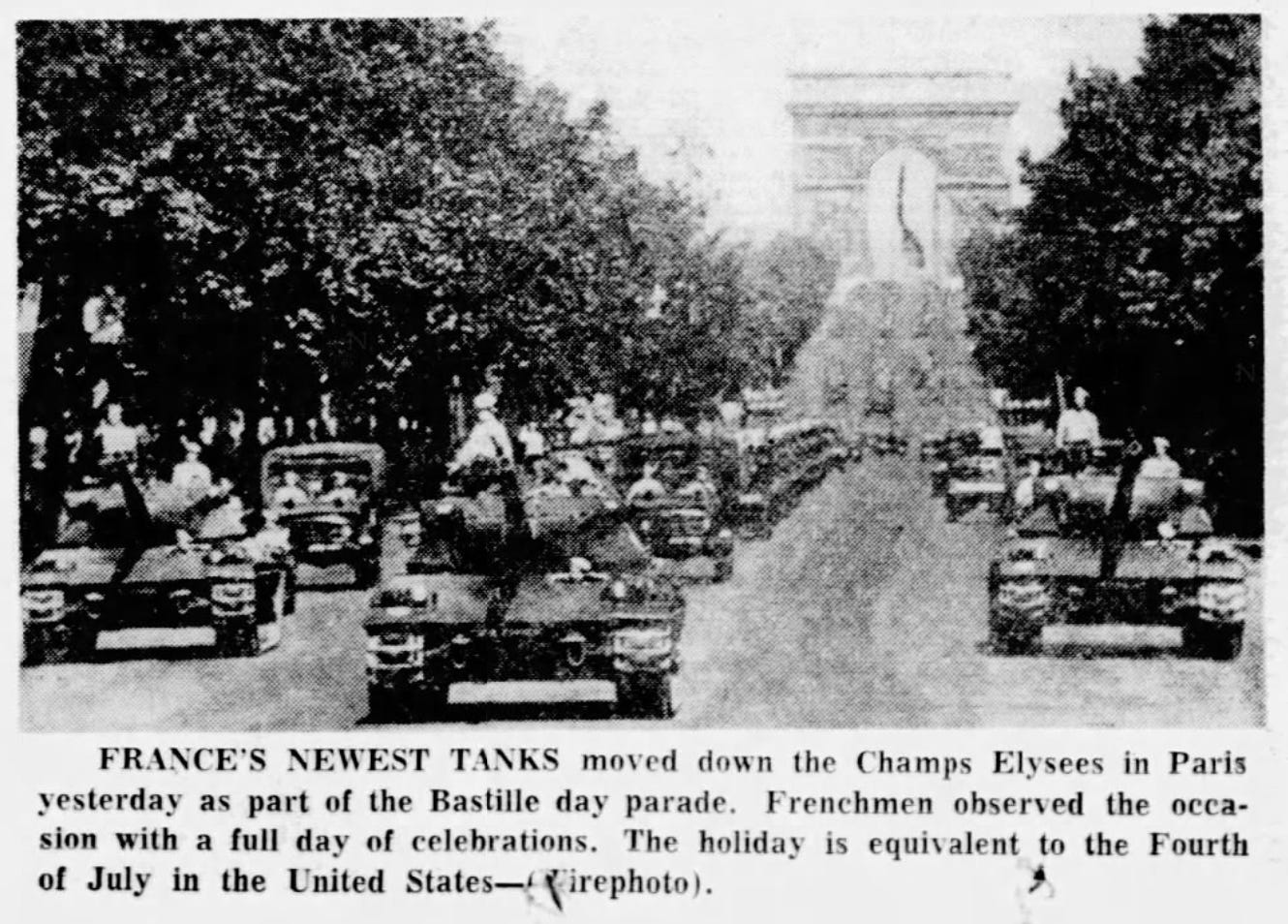
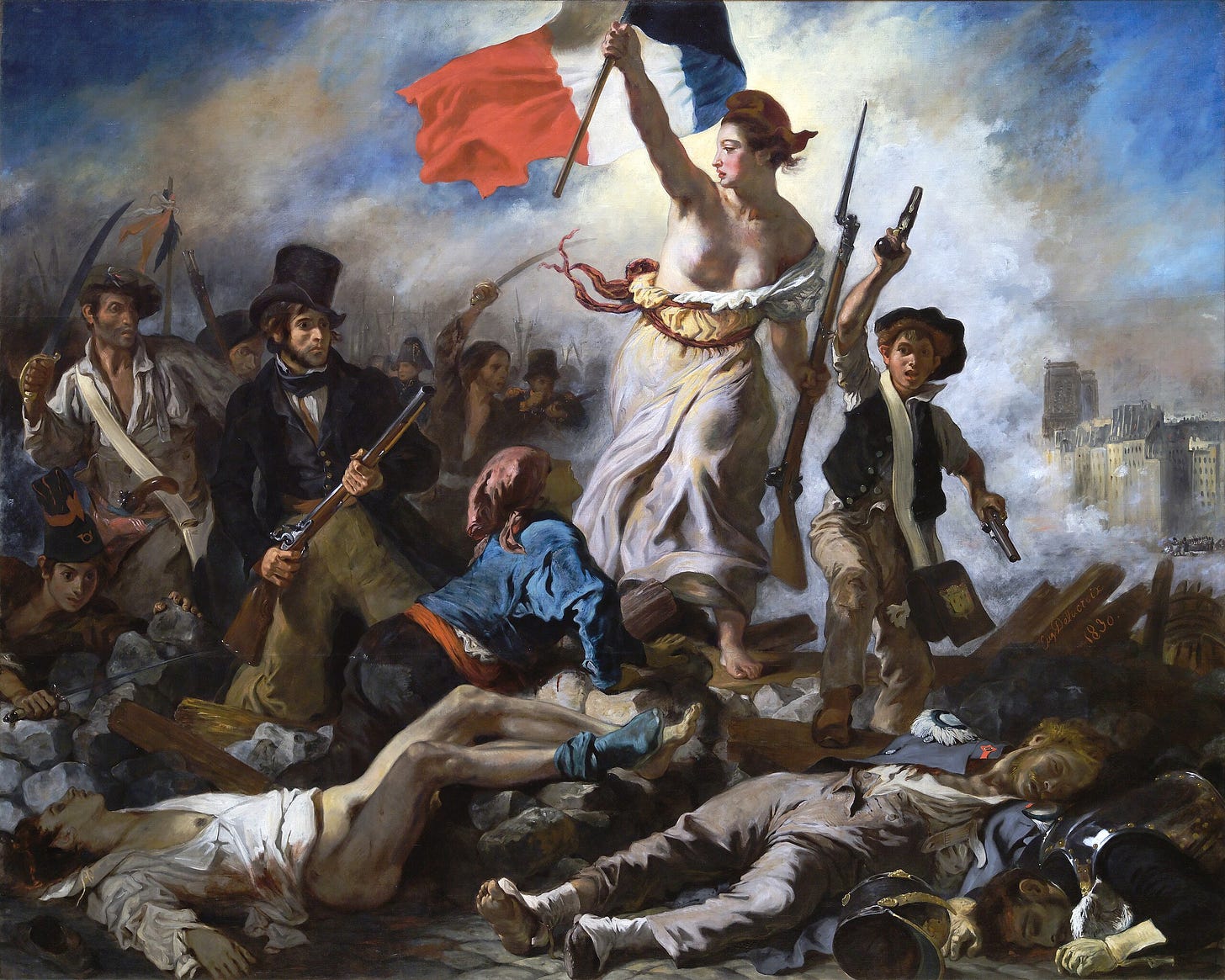
Oh, this makes me want to travel, Linda! How fun to read these letters - thank you for giving them new life!